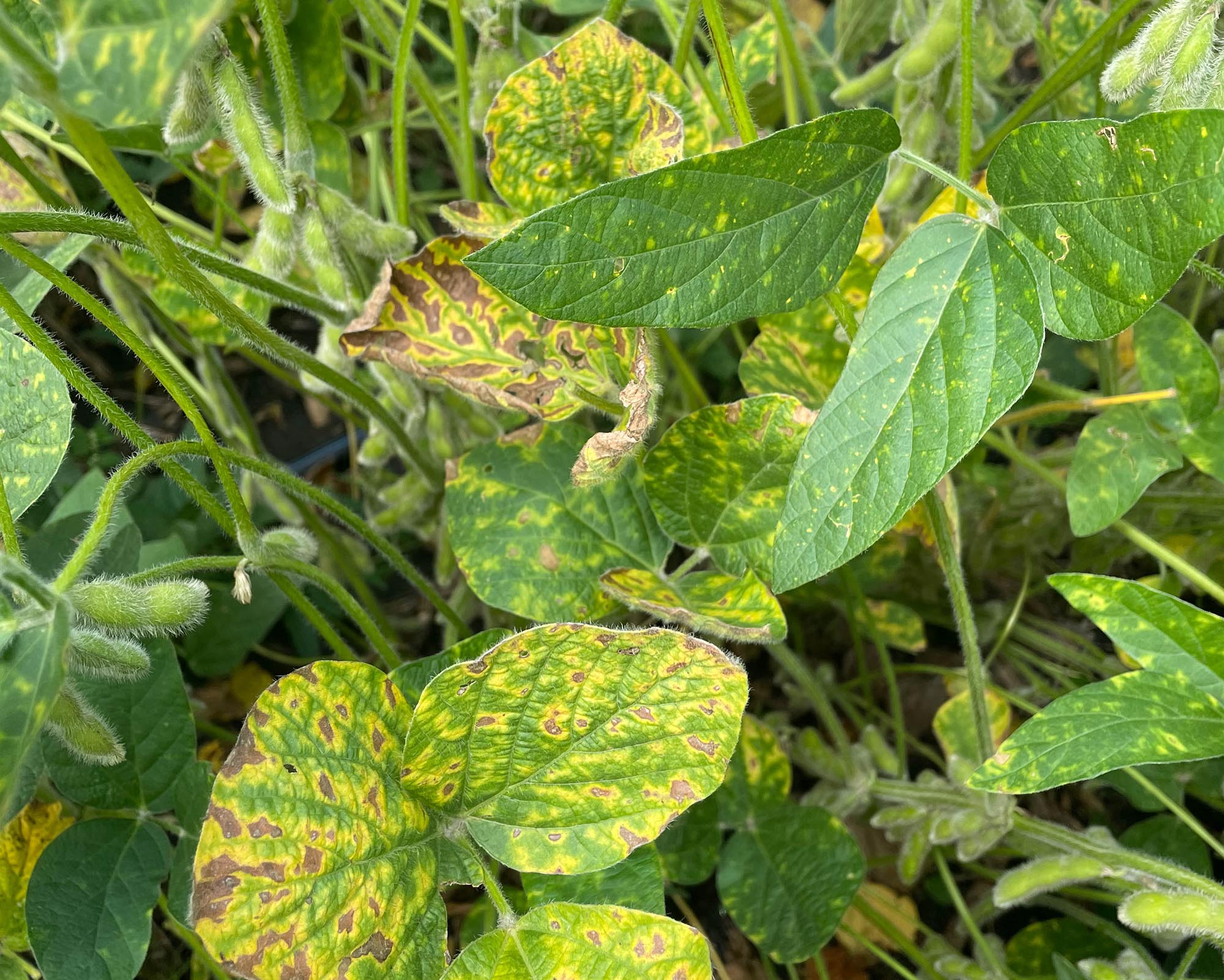
ISU plant pathologist Daren Mueller said various soybean diseases, like sudden death syndrome, popped up in Iowa fields this year. (Photo: Daren Mueller/Iowa State University)
Disease pressure could cause yield drops in soybeans this fall
September 17, 2021 | Kriss Nelson
White mold, sudden death syndrome (SDS) and brown stem rot are just a few of the diseases that have been causing damage in soybean fields across the state this year and many people are scratching their heads as to why.
Daren Mueller, Iowa State University Extension and Outreach plant pathologist, said considering many of these diseases typically accompany high moisture conditions, producers may need to look at the soybean traits they planted this year – specifically if it is a newer trait to hit the market.
“We saw a lot more disease, a lot of different diseases and some of the varieties affected are those with newer herbicide traits,” said Mueller. “I feel, as a plant pathologist, some varieties might have been rushed to the market, perhaps not enough attention was given toward the disease packages on some of these new varieties.”
White mold
White mold has sporadically been showing up in the latter part of the growing season. Much of where the disease shows up had to do with some of the rainfall. But was there actually enough rain to cause issues?
“It certainly wasn’t ideal conditions for white mold,” Mueller said. “Some places had timely rains, but I think this would be evidence as to what would happen if you got away from disease resistance. If you planted super susceptible lines, you don’t need the perfect conditions to get disease. You only need average conditions to get disease.”
SDS and brown stem rot
Mueller said he was getting calls from producers disappointed in SDS showing up in their fields after using seed treatments this spring. While investigating those yellow patches in fields over the past month that were suspected to be SDS, not all were, however.
“We started digging a little deeper and it ended up being brown stem rot,” said Mueller. “Again, there were a lot of varieties out there that were more susceptible to these major stem diseases, and you didn’t need the perfect conditions to get disease; they had higher levels of susceptibility.”
Stress diseases
Some of the diseases weren’t as much of a shock considering the amount of stress soybeans were under due to lack of moisture in various areas of the state.
Pod and stem blight, and charcoal rot were also the culprit of some of the yellow patches in fields.
“These appeared in small patches and in the edges of fields as soybeans started to mature and some areas matured a little bit quicker, it could have been pod and stem blight or charcoal rot. They weren’t huge issues, but they certainly showed up this year,” he said.
Foliar diseases
Although sparse, Mueller said foliar diseases such as downy mildew, soybean vein necrosis virus and frogeye leaf spot were also present this year.
Soybean vein necrosis virus tends to be a dry season disease transmitted by thrips and came in some lower levels this year.
Frogeye leafspot, however, was a surprise.
“We found a couple of varieties out there that were very susceptible to frogeye leafspot this year when we should not have seen a lot of frogeye,” Mueller said.
Be aware
Mueller said the first step at combatting any potential disease is to know what you have planted and to be aware of what is going on out in the field.
“If you didn’t go out and walk your fields, or if you still have some green out there, go walk them. See what you have out there,” he said. “Also, take a lot of notes when you are harvesting this year. If it didn’t yield as high as you expected it to, hopefully you took notes this summer to help explain that. There should have been a lot of notes on diseases taken this year on those newer varieties.”
Back